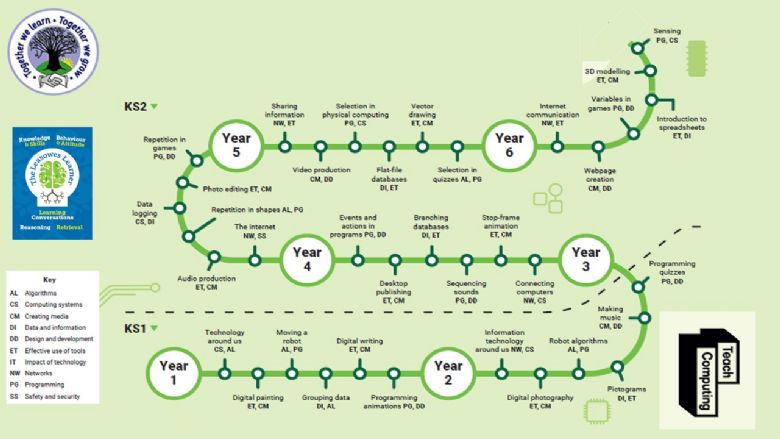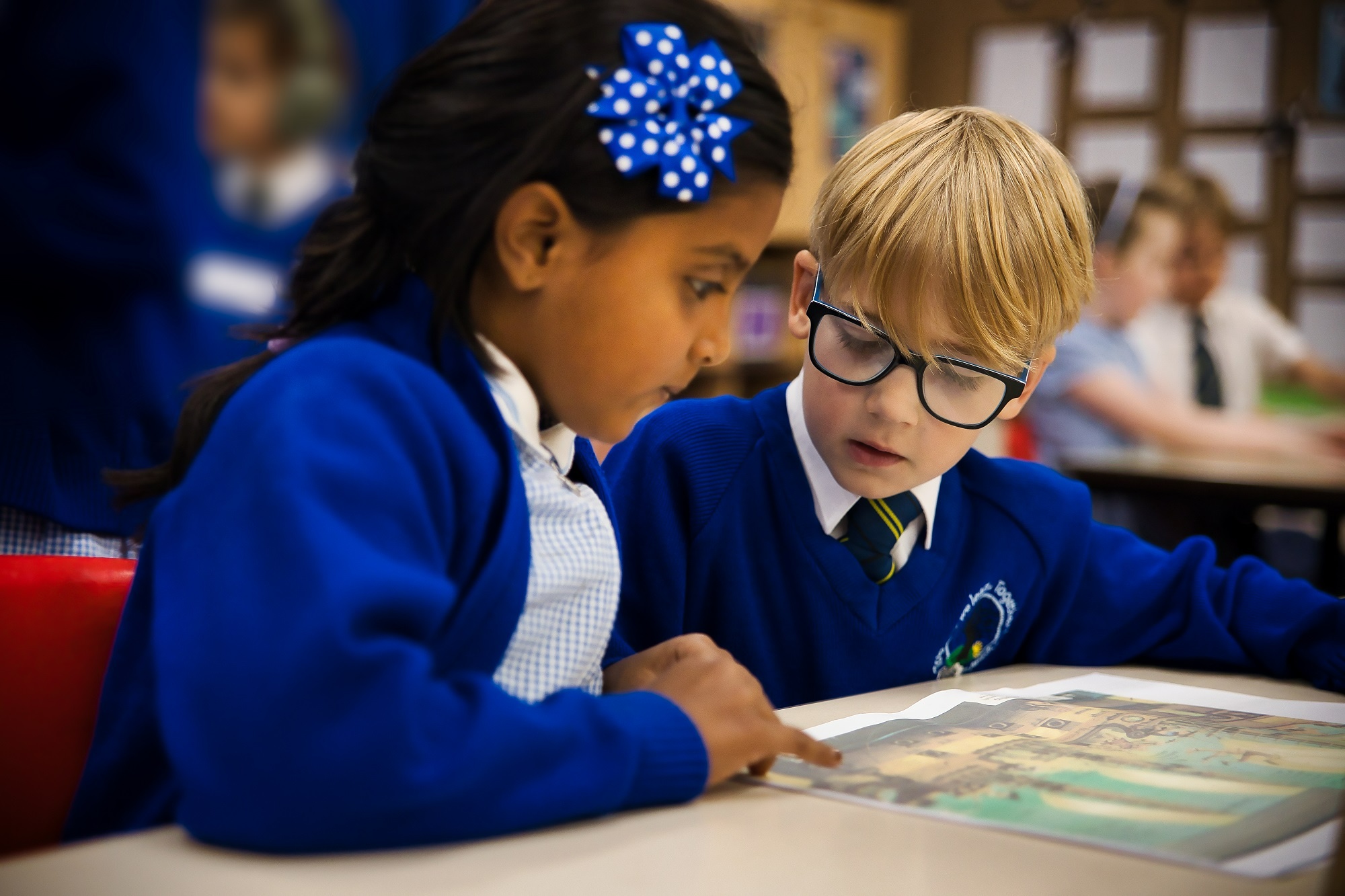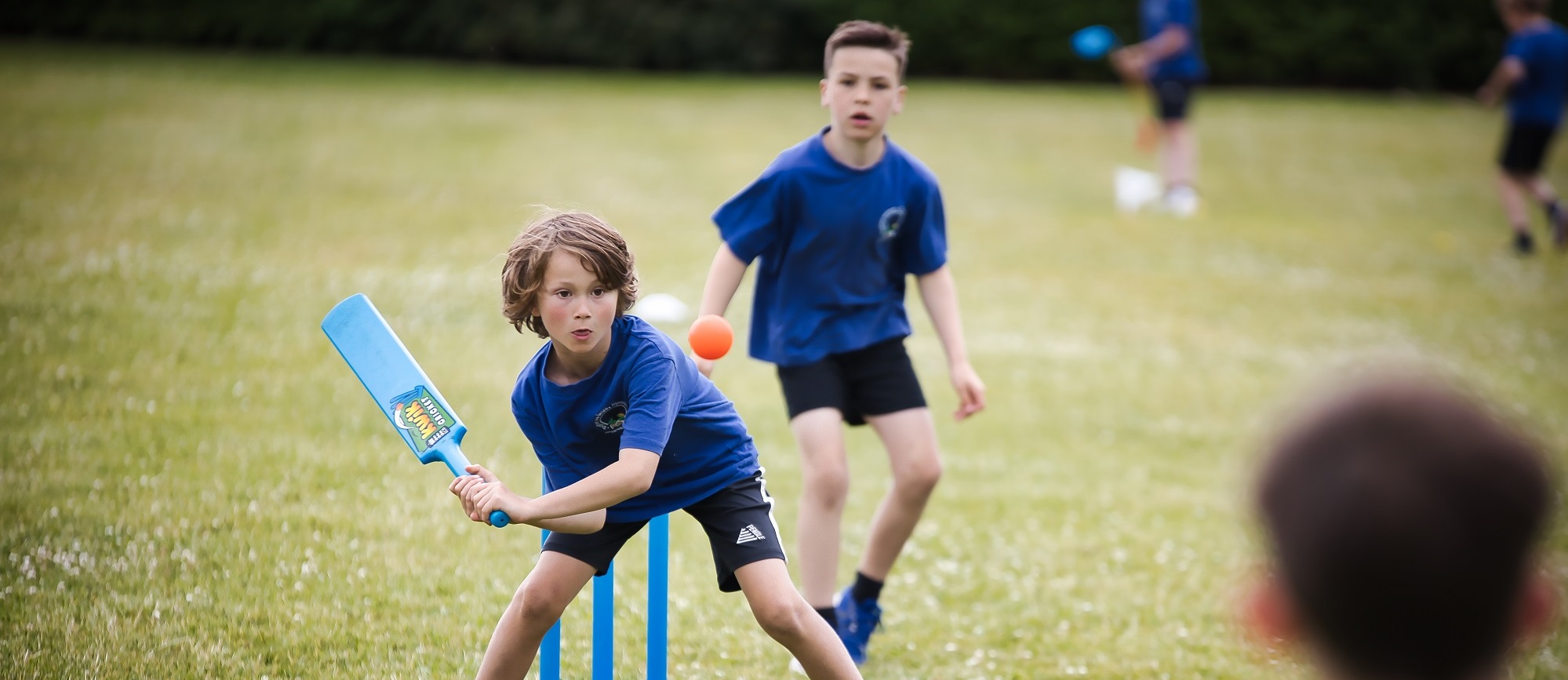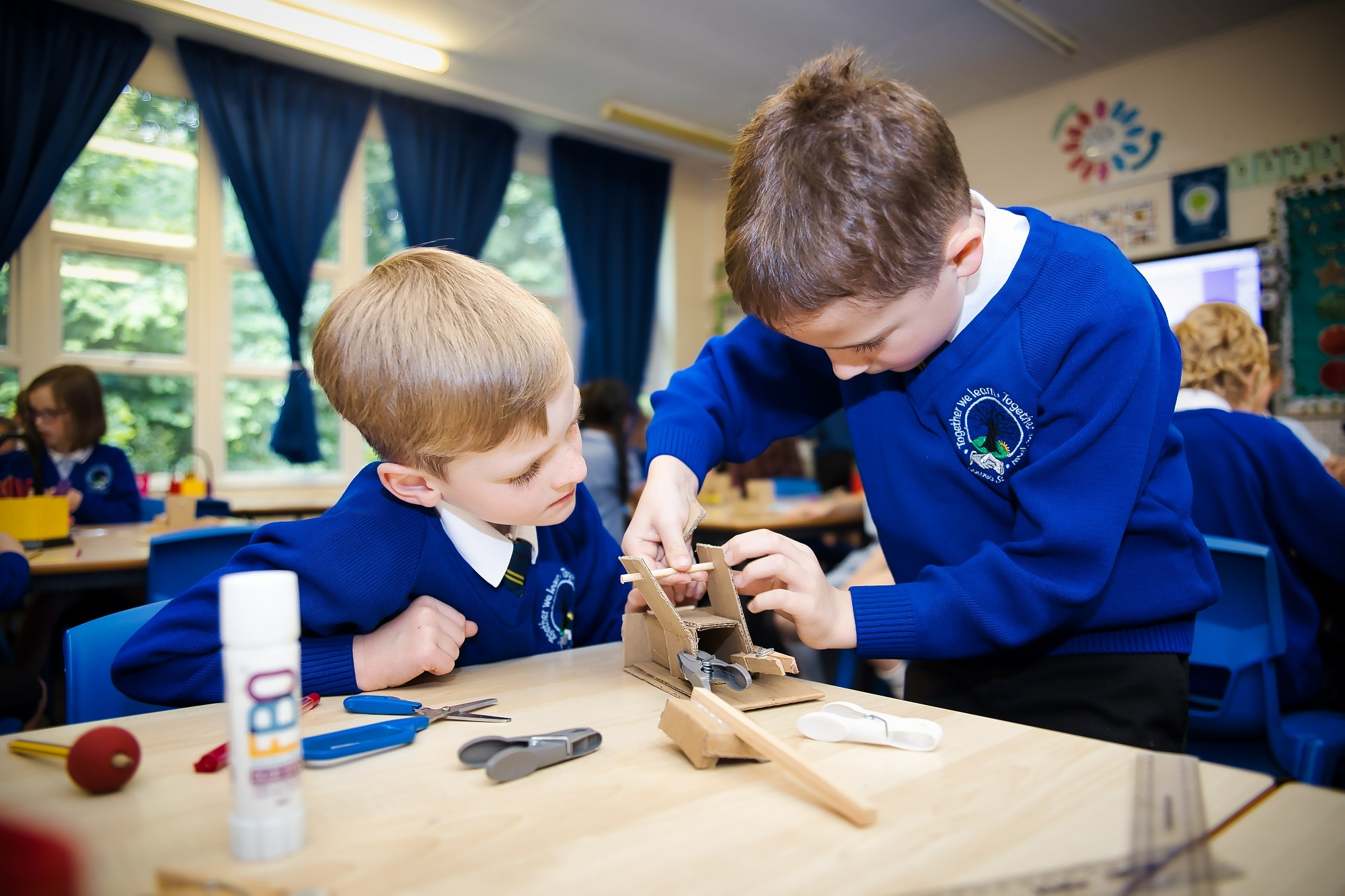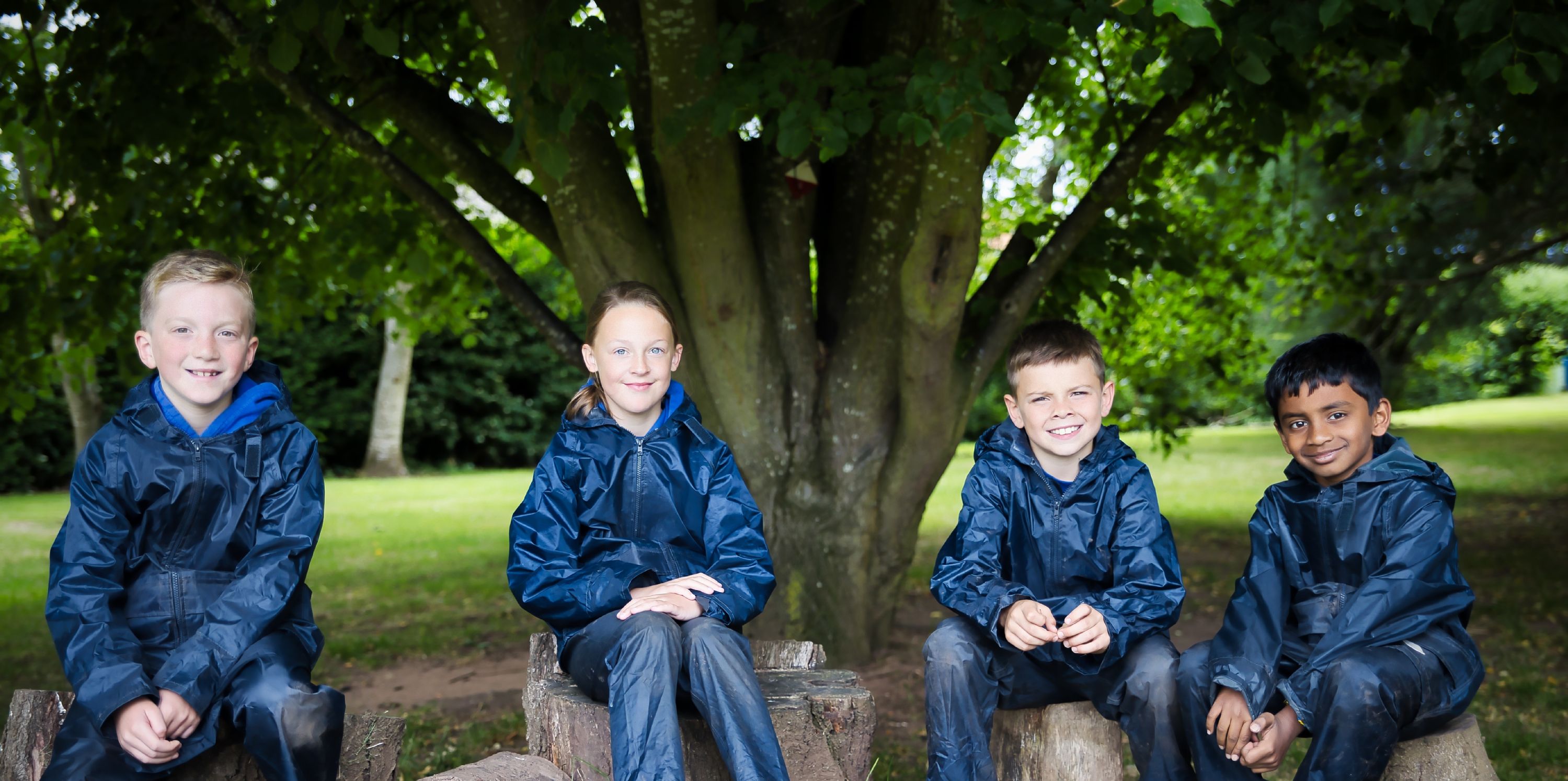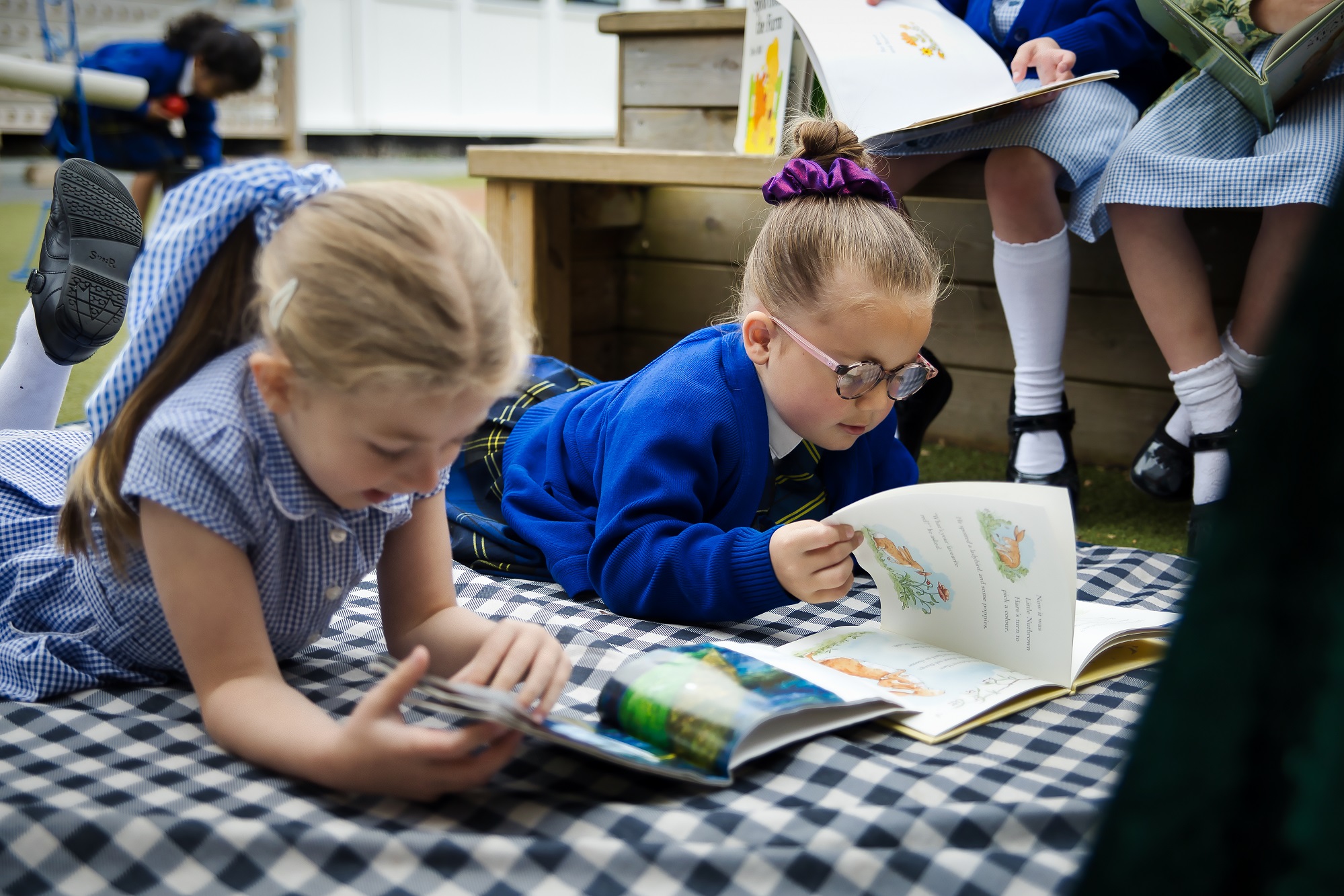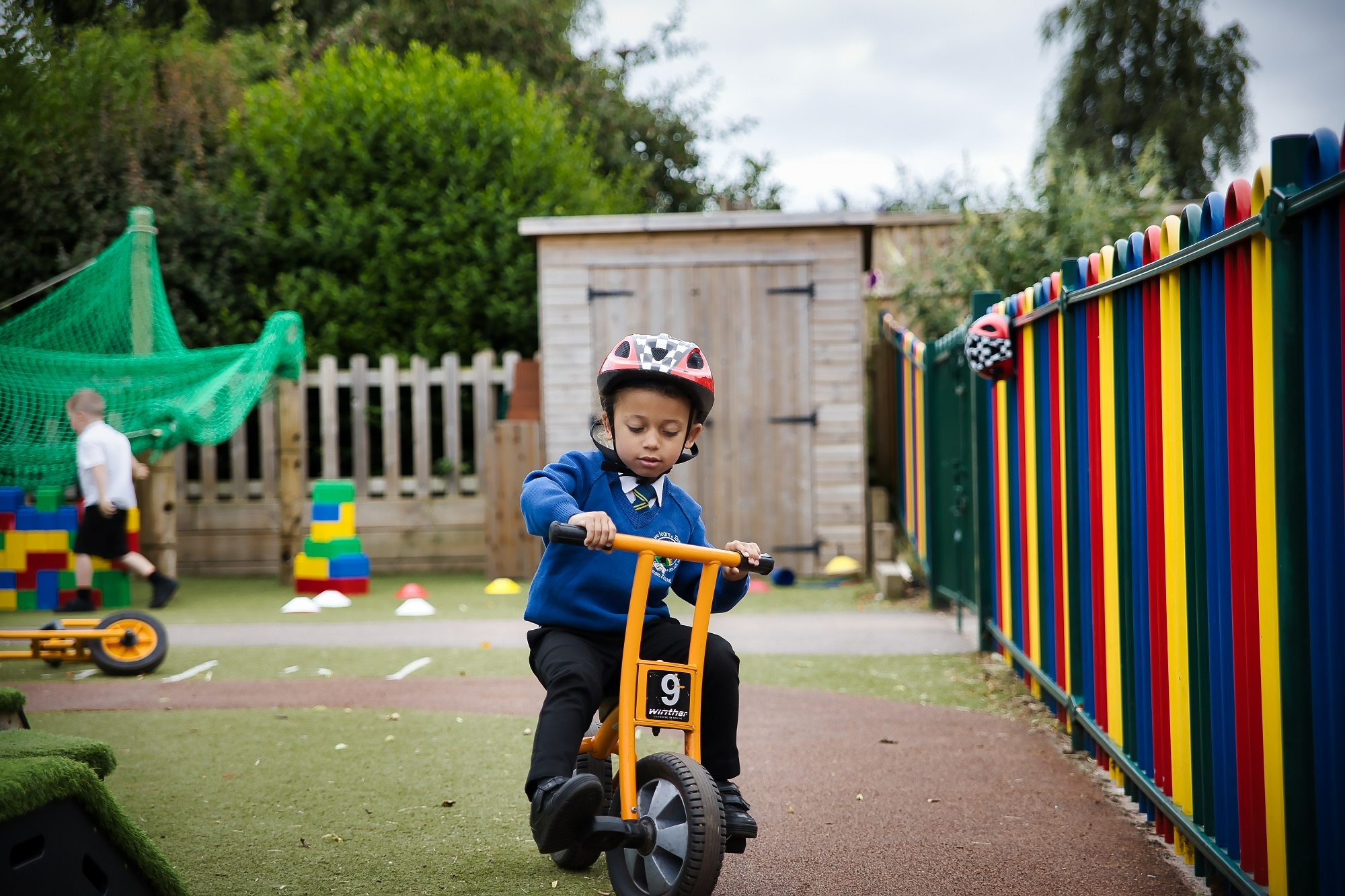Computing
Subject Lead: Mrs S Thomas
Computing Intent
We aim to give our pupils the life-skills that will enable them to understand and apply the fundamental concepts of new technology in a socially responsible, positive and safe way in order to become digitally literate. We want our pupils to become autonomous, independent users of computing technologies, gaining confidence and enjoyment from their learning experiences while being able to analyse and evaluate new or unfamiliar technologies. Staff are encouraged to embed computing across the whole curriculum to make learning creative and accessible: making deep links with maths, science and design and technology. We want our pupils to be equipped to use computer science and information technology to develop creativity, resilience, problem-solving and critical thinking skills as responsible, competent and confident digital citizens to a level suitable for the future workplace. Our high-quality computing education equips pupils to foster a love of technology through varied experiences, problem-solving and critical thinking skills - as creators not only consumers - to become thoughtful digital citizens.
Our Computing Approach at Leasowes
Our ambitious computing curriculum aims to ensure that all pupils can understand and apply the fundamental principles of computer science, including logic, algorithms, data representation, and communication; can analyse problems in computational terms, and have repeated practical experience of writing computer programs in order to solve such problems; can evaluate and apply information technology, including new or unfamiliar technologies, analytically to solve problems; are responsible, competent, confident and creative users of information and communication technology.
The aims are sequenced into a spiral curriculum based on four units across key stages one and two: computing systems and networks; creating media; data and information and programming; following the Teach Computing Scheme as a skeleton to build on. Lesson sequences are adapted to be ambitious and progressive; coherently building seamlessly on from previous lessons and prior learning in other year groups. These units are mapped out in the Computing Curriculum Overview.
This whole-school scheme of work is for Year 1 to Year 6 pupils and meets the objectives of the National Curriculum for Computing, allowing for clear progression within the subject which ensures the coverage is progressive, rigorous in its approach, coherent and relevant. Our ambitious curriculum extends the experiences of the children through well-resourced lessons. Teach Computing is based on the latest pedagogical research, and it also provides a progression framework where computing content (concepts, knowledge, skills, and objectives) has been organised into interconnected networks called learning graphs. Each lesson is planned, developed and delivered to be engaging and motivating with lessons that are relevant to the children with cross-curricular links where possible.
Early Years learning environments feature play-based experiences of computing where children gain confidence, control and language skills through opportunities such as ‘programming’ each other using directional language to find toys/objects, creating artwork using digital drawing tools and controlling programmable toys with some discrete teaching of mouse and keyboard skills.
The school also follows the Project EVOLVE toolkit for Online Safety that covers knowledge, skills, behaviours and attitudes across eight strands of online lives from Early Years to Year 6. Many of these strands are referenced in the Teach Computing scheme; however, some are taught discretely during Anti Bullying week in the Autumn Term and Safer Internet Day in the Spring Term. Many of the strands are covered in PSHE units. Teachers are to highlight units covered from the Framework for monitoring. Knowledge maps are used to assess the needs of the children so that all objectives are relevant to the children. As a Rights Respecting School the curriculum is underpinned by the CRC and the articles covered through computing include Article 8 – Preservation of identity, 17 – Access reliable information, 16 – Right to privacy, 34 – Sexual exploitation, 36 – Other forms of exploitation.
Children who are successful within computing will be creators and not merely consumers of technology. They are able to respond to new developments in technology while enhancing learning in other areas of the curriculum using computing and develop the understanding of how to use computing safely and responsibly. Children’s cultural capital is developed through pupils being equipped with the confidence and capability to use computing throughout their later life. We believe that the golden thread of computing is to empower children to become thoughtful creators of technology and how to make informed choices about how they engage with technology - rather than just being passive consumers.
